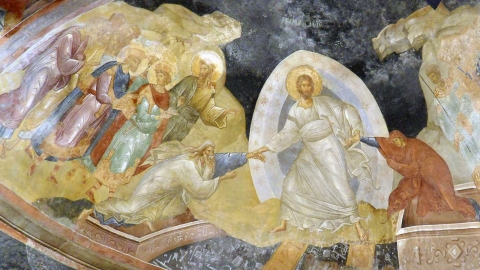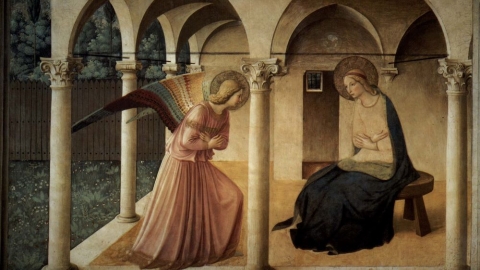Knights of Malta Divided About the Reform of the Order

The Sovereign Order of Malta is still subject to internal strife. The summer of 2020 was marked by opposition between the South American and German Knights against the North American Knights. The question under debate: the reform and, consequently, the control of an institution whose human and financial weight remains considerable.
Origin and Activity of the Order of Malta
The Order of Malta dates back to the 11th century. Its origins are linked to the defense and assistance of pilgrims to the Holy Land. Its current status is twofold: religious, for members who have made vows, who are not the majority; and legal, being a sovereign subject of international law. However, this sovereignty is functional, that is, it depends on the individual recognition of each state with which the Order maintains a diplomatic relationship.
The Order claims 13,500 members, all lay people, vowed to the exercise of Christian charity. To that is added 80,000 permanent volunteers who help members in their charitable actions.
Today, the Order of Malta operates in medical and social assistance and in the field of humanitarian interventions. It enjoys the support of 42,000 professionals, especially in the medical and paramedical fields. It manages numerous facilities: hospitals, clinics, medical centers, establishments for the elderly and disabled, and homes for the terminally ill.
The Order is present in more than 120 countries. It has established diplomatic relations with one hundred and ten states, which facilitates its humanitarian activity around the world. It can thus engage its relief agency—Malteser International—during natural disasters. Lastly, it is offers assistance to patients suffering from leprosy.
Funding of activities is done mainly through the generosity of members and private donations. For activities in the poorest countries, the Order receives financial support from the European Commission and other international organizations.
The Order is governed by a Grand Master, elected for life by the Complete Council of State, assisted by the Sovereign Council, whose members are elected by the General Chapter—the assembly of representatives of the members of the Order which meets every five years.
The Factual Origin of the Current Crisis
The crisis took shape in November 2016, when the Grand Master dismissed the Grand Chancellor (Minister of Foreign Affairs and head of the executive). He accused him of having allowed condoms and contraceptives, including abortifacients, to be distributed in Africa and Asia to fight against sex trafficking and AIDS. The accused defended himself and refused to resign.
The Holy See, which has authority over the Order as a religious society, decided to investigate. The Grand Master refused their attempt, in the name of the legal independence and sovereignty of the Order, enshrined in its Constitution. But the Holy See continued. The case turned into a conflict between the Grand Master and the Vatican.
The fact that the cardinal protector of the Order, Cardinal Raymond Burke, supported the Grand Master, did not calm the conflict. It will be remembered that Cardinal Burke was a signatory, along with three other cardinals, of the dubia on Amoris laetitia addressed to Francis.
Pope Francis finally obtained the resignation of the Grand Master. He also demanded a reform of the Order.
The future of the Order
Two elements have been the source of serious dissension within the Order for years. The first being about economic and financial interests, the management of which remains conflicting.
But the main difficulty relates to the very essence of the Order: should it remain an organization, with a strong religious imprint, linked to sound Catholic doctrine, as it has always been? Or should it evolve towards a more secular structure, more like an NGO freed from certain duties?
On September 3, the Knights celebrated in Salerno the 900th anniversary of the death of Blessed Gerard of Saxe, founder of the Order of Malta. But unanimity does not seem to reign.
Last spring, during the lockdown, the German National Association of the Order sought to speed up the reform aimed at expanding the recruitment of professed knights, one of the points of contention.
On July 6, the debate moved to the New World: the Knights in Canada and the United States denounced the German maneuvers at the Vatican, deploring no longer having a say in the matter. With the support of the Pope, Cardinal Becciu intervened to demand that everyone - Germans in particular - respect the Constitutions.
On the following July 30, it was the turn of the presidents of the national associations of South America - eight in number - to write to the special delegate, this time complaining about the attitude of the Knights of North America, whom they consider hostile to any reform of the Order.
“The tone of the letter [from the North American Knights] saddens us, for it poses unwanted and unproductive obstacles in the long and complex process of reform under way,” denounced the South American members of the Order.
Next step: November 2020. A new grandmaster must be elected—or, failing that, a lieutenant of the grandmaster, if no consensual figure emerges. It is he who will have the heavy burden of putting to a vote, and accepting, the new Constitutions of the Order.
The stakes are immense: on the one hand, it concerns the control of an institution present in the world in an unrivaled way, acting at various levels of civil society, and whose human and financial resources are enough to arouse many appetites. But on the other hand, it is about the status of a very old Order which has crossed the centuries spreading good, and which risks losing its proper character.
Related links
(Source : Il Mattino/orderomalta.int/benoitemoi – FSSPX.Actualités)
Illustration : Giorgio Minguzzi/Flickr/CC BY-SA 2.0)





